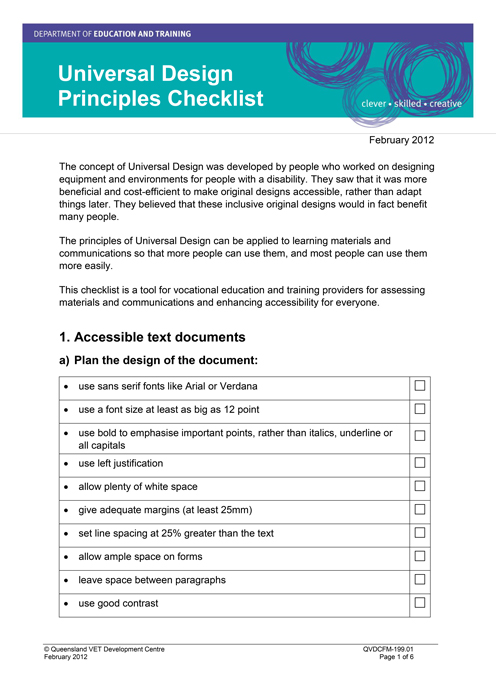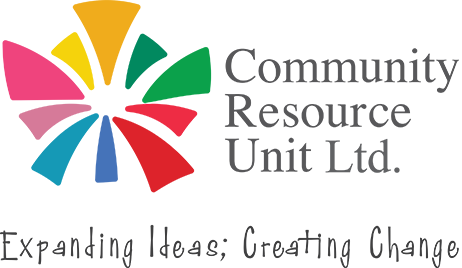
Newsletter seven:
A Selection of the FFIE Team’s Favourite Resources
In this newsletter, the CRU team has provided background and links to some of their favourite resources from the FFIE Resources pages. We hope that these reviews provide families with the opportunity to gain extra insight and tips as they prepare for the 2021 school year.
Mindsets for Inclusion - Lisa Bridle
Often in achieving inclusive education, we talk about the importance of getting the mindset and attitude right. We can see how challenging it can be when schools don’t share a mindset that inclusion for all is possible, and we also see what is possible in inclusive classrooms, when there is a positive belief that everyone can learn together.
Given that many damaging perceptions of disability continue to influence our service systems, it is important to keep examining our assumptions. CRU was excited to receive permission to share a wonderful video Rethinking Behavioural Therapy produced by Norm Kunc and Emma Van der Klift of Broadbeach Training for their Conversations that Matter site. This video features Lydia Brown, an impressive young disability leader who challenges us to rethink assumptions of normalcy and a focus on compliance, topics with great relevance to inclusive education.
Watching this video reminds all of us of the critical importance of listening carefully to those who live with disability – including those who do not communicate verbally, and to take our lead from a deep understanding of their experiences and their human rights.
For those who may be interested in considering common unhelpful assumptions about disability, and alternative understandings and approaches, we would also highly recommend watching this short but moving video (written and produced by Norm Kunc and Emma Van der Klift) called the Credo for Support.
For those watching for the first time, please be warned that it begins with some painful and disturbing history of treatment of disabled people. It includes powerful messages that people with disability are not broken, as well as helpful advice to “Be still and listen” and “Do not tell, correct and lead. Listen, support and follow”. Great advice for parents and educators alike!
To read more, see 'Changing Mindsets' (PDF) by Martin Elks, from CRUcial Times edition 47.
Quick Inclusion Reads for Busy Parents - Lindie Brengman
Thinking about inclusion: Following the natural paths of childhood (PDF) by Dr. Bob Jackson.

This is my ‘go to’ for a summary of the WHY inclusive education is important – for my child, other children, for teachers, schools, and for our community. It is only 8 pages, takes pride of place in our Understanding Inclusive Education: Key resources section, and begins with the sometimes controversial, but always memorable, ‘trajectory’ diagram.
I have seen this diagram crystallise parents’ thinking about what they want for their children, and it conceptualizes the compass that keeps my vision for my own daughter on track.
Dr Bob Jackson’s article introduces those new to the concept, to WHAT inclusion is, as defined by the United Nations Convention of the Rights of Children with Disability, and the 50 years of research that shows our society’s history of educating children with disability away from their non-disabled peers is not based on evidence. He informs readers of the classification of inclusive education as a fundamental human right of every child under this Convention, and describes the legislation in Australia that supports this right.
I really appreciate, and I know other parents do too, that he also touches on the HOW of inclusive education, from the mechanics of physical, social and curricular inclusion of every child in a regular school classroom, to what helps parents pursue this for their children. Bob is not naïve though, and knows that even in the face of evidence, human rights and law, it is only the will of people that will move inclusion forward for children with disability. And looking back over my daughter’s 12 years of schooling so far, 2 schools and so many teachers, this I have found to be true:
Overall, inclusion is an issue of the heart. All it takes to be successful is the will and the skill. With the will, we can develop the skill through partnerships between parents and the school and outside assistance where required. Without the will, we are dealing with a moral issue that is not solved by resources or added expertise.
R. Jackson, 2012, 2017, pp. 5-6
When your child engages in difficult behaviours…Notes for Parents (PDF) by David Pitonyak.
I am not a fan of the word ‘behaviour’ – particularly when it is used in relation to children with disability, and even less, my daughter. My personal belief is there are experiences and feelings, and there are our reactions to those. Most of us, most of the time, do a pretty good job communicating how we’re feeling or what we’re needing, or indeed get our needs met independently, without creating any lack of comfort to those around us. However none of us do this well all of the time. Some children face enormous barriers in identifying what they need or feel, independently getting what they are needing (or automatically receiving what non-disabled peers take for granted), and/or articulating their needs and feelings in a way that can be received openly and accurately by those around them. I think it is important for us to keep this in mind and focus on building skills rather than managing ‘behaviour’. Labelling reactions and attempted communications as ‘behaviour’ is unhelpful and lacking in empathy, and distracts from exploring and discovering what can often be communication of a fundamental human need.
In turn, I love this article written by David Pitonyak, which we have included in our Friendships and Belonging: Supports around 'Behaviour' section. When a child’s ‘behaviour’ is becoming central to every conversation with school, a parent needs something simple, sensitive and wise to turn to. In my opinion this article is just that. David helps parents come back to looking at the child who captured their hearts and dreams before labels and ‘behaviours’, seeing what is going on for them through the most ordinary, practical lens, and supporting them to get their needs met more effectively. My hope is that this article will help parents to communicate with schools about what their child with disability is actually needing, therefore improving their school experience:
The important point is that difficult behaviours do not occur by accident, or because someone has a disability. Difficult behaviours are expressions of real and legitimate needs.
(p.3)
Achieving Curriculum Inclusion - Ainsley Robertson
There are three main parts to school inclusion. Physical inclusion, social inclusion and curriculum inclusion. As both a teacher and a parent of two children with disability, curriculum inclusion has become a key interest of mine. Unless you have a background in education (and even then, it can still be tricky!), curriculum inclusion can be the most difficult area of inclusive education to explain, advocate for, and achieve for your child.
During many 1:1 consultations here at CRU I have been asked in one way or another, “Is it possible for my child to access age-appropriate content alongside their peers?”, “How do I advocate for curriculum inclusion for my child?” and “Will expecting curriculum inclusion for my child exhaust my child’s teacher?”
An excellent resource that I refer family members seeking straightforward answers to such questions is an article that is featured on our FFIE resources, ‘Classroom Learning’ webpage. The article is called, ‘The Australian Curriculum – A Curriculum for ALL’ and was written by Queensland inclusive educator and school leader, Loren Swancutt. In this brief article, Loren outlines how curriculum inclusion is very possible for all and how tools and approaches provided by the Australian curriculum support teachers to, “seamlessly address variances in cognitive, physical and social development.” (Swancutt, 2018)
Teachers can utilise the Australian Curriculum to deliver teaching and learning programs that are responsive to diversity within regular, heterogeneous classrooms. It provides tools and approaches that support teachers to seamlessly address variances in cognitive, physical and social development.
Loren Swancutt
Another one of my favourite resources from FFIE’s ‘Classroom Learning’ page that relates to curriculum inclusion is the, Universal Design Principles Checklist (PDF). The Queensland VET (Vocational Education and Training) Centre originally published this checklist in 2012. Although first intended for VET educators, this practical resource is a useful guide that could be applied to learnings materials and communications by educators from mid-primary level through to tertiary.
 Universal Design for Learning (UDL) came about due to the rise in popularity in the 1970s (and onwards) of an architectural concept called, ‘Universal Design’. Within the area of architecture, the concept of Universal Design requires designers to ensure the products and environments they create appeal to all, whilst specifically meeting the access requirements of individuals with disability.
Universal Design for Learning (UDL) came about due to the rise in popularity in the 1970s (and onwards) of an architectural concept called, ‘Universal Design’. Within the area of architecture, the concept of Universal Design requires designers to ensure the products and environments they create appeal to all, whilst specifically meeting the access requirements of individuals with disability.
In recent decades, we have seen the use of ‘Universal Design’ in architecture open up physical access to educational facilities to students with disability. However, once on school grounds many students with disability have found they are ‘locked out’ of the school curriculum. Due to flaws in curriculum implementation, many students with disability are not provided with equal access to the same learning opportunities as their non-disabled peers. Therefore, quality learning remains inaccessible.
Universal Design for Learning aims to reduce the barriers to learning that all, and especially students with disability often face when in the classroom. When the guidelines for Universal Design for Learning are followed, “learners can access and participate in meaningful, challenging learning opportunities.” (CAST.org)
If educators were to follow this checklist we would see, I believe, far fewer students being ‘locked out’ of the learning provided in the complex, cramped and confusing learning materials and communications that are all too often provided by educators.
When your child is sent home the next cramped home work sheet featuring minute text, provided with a confusing marking criteria matrix or is provided super complex instructions by school, it may be worth running your eyes over the Universal Design Principles Checklist and diplomatically offering some hints to school that would improve accessibility for all. In doing so, you won’t be just improving your child’s access to learning but hopefully access for many others the teacher may interact with in years to come!
We hope this newsletter provides you with some insightful holiday reading. It was a pleasure to meet so many of you in 2020 – either face to face, by phone or in the virtual world.
We look forward to starting the 2021 school year with you in January, and working with you to support your child’s inclusive education experience,
Warm regards,
The FFIE team
